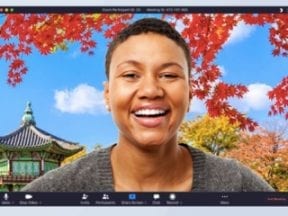Project-based freelancers can accomplish all sorts of work, from customized Shopify themes and personal apps to data entry and marketing. But how does a company find good freelancers?
For many businesses, hiring a freelancer starts on a labor marketplace such as Upwork, Guru, Toptal, and similar. I have done this myself. I have used marketplaces over the past several years to hire dozens of freelance workers for various projects. I am currently interviewing several candidates on Upwork.
Hiring experiences vary. I have hired freelancers that — in my opinion — were dishonest or did shoddy work. But I have also hired freelancers repeatedly on multiple projects, including a database developer based in India who has done a few hundred hours of work. Whatever the project, freelancers often outnumber job posters by three to one or more.
Here are a few suggestions, based on my experience, for hiring freelancers from one of these platforms.

It is possible to hire good, hard-working freelancers from labor marketplaces. The key is understanding how to select the best candidates.
5 Tips for Hiring Freelancers
1. Have a well-defined project. A company might know that it needs a new ecommerce theme, an app or extension, or, perhaps, help in setting up a Google Ads account. But it might not be enough to find and hire the best designer, developer, or marketer for the project.
It is important to think through the behaviors needed. Here’s an example. Say a company using Shopify’s basic plan wanted a specific shipping behavior. When a particular product is added to the cart, the shipping price becomes zero regardless of other shipping profiles or calculations. This sounds simple enough, but given the constraints of the basic plan, it requires a fair amount of work.
In this case, it would not be enough to simply say, “We need a private app for customer shipping.”
2. Communicate project details. Once a business knows what it needs, it must clearly communicate. Video can be one of the best ways to do that.
The company can create a video using a screen capture service such as Loom or Apple’s QuickTime. The video can demonstrate the specific task.
Returning to the private app for Shopify, the video might show the current behavior on the site — when items with different shipping profiles are added to the cart, the shipping costs are totaled — and describe the desired behavior. In that example, one product overrides all other shipping costs.
Supplement the video with a good written description and images.
3. Know how much you can spend. After defining the project, set a realistic budget for the work. Also, decide if the freelancer will be paid a flat rate or hourly.
A flat rate is easier for the company to budget. However, it presents a couple of potential problems. If it takes more work than a freelancer anticipated, the project could be “dumped,” meaning that the freelancer simply quits and leaves the project only partly completed. This can happen on labor marketplaces and, in my experience, is more likely with new freelancers.
Conversely, hourly-based projects will not likely get dumped, but they can grow more expensive if the project proves more complex than expected.
Neither method — flat rate nor hourly — is perfect.
4. Interview several candidates. Many freelance labor marketplaces use a bidding or proposal system. A company posts a job. Freelancers reply with rates, resumes, and proposals. A written conversation follows.
Once you have narrowed the field to two or three candidates, set up video calls. Many candidates will reside in time zones far from your own — be prepared for the scheduling challenges. Nonetheless, you will see the candidate.
These video interviews are an opportunity to discuss the project further. You can ask freelancers how they would address the project and confirm they understand the expectations. And you can assess working with a person.
And, as a pro-tip, record these interviews.
5. Run a test project. Consider a test project to vet candidates for larger tasks, such as developing an app or creating a marketing campaign.
The test project should be compensated. It is not acceptable to ask freelancers to do a test for free. It should also be directly related to the larger project.
For example, if that project is for Shopify app development, retain the candidate to develop a small private app, perhaps one that creates a product feed or an index of blog articles.
Use the test project to gauge the freelancer’s skill and speed.
Hire the Freelancer
If a business has done its best to define the project, it’s time to select a freelancer and get started. Not every hire will work out. But most will.




